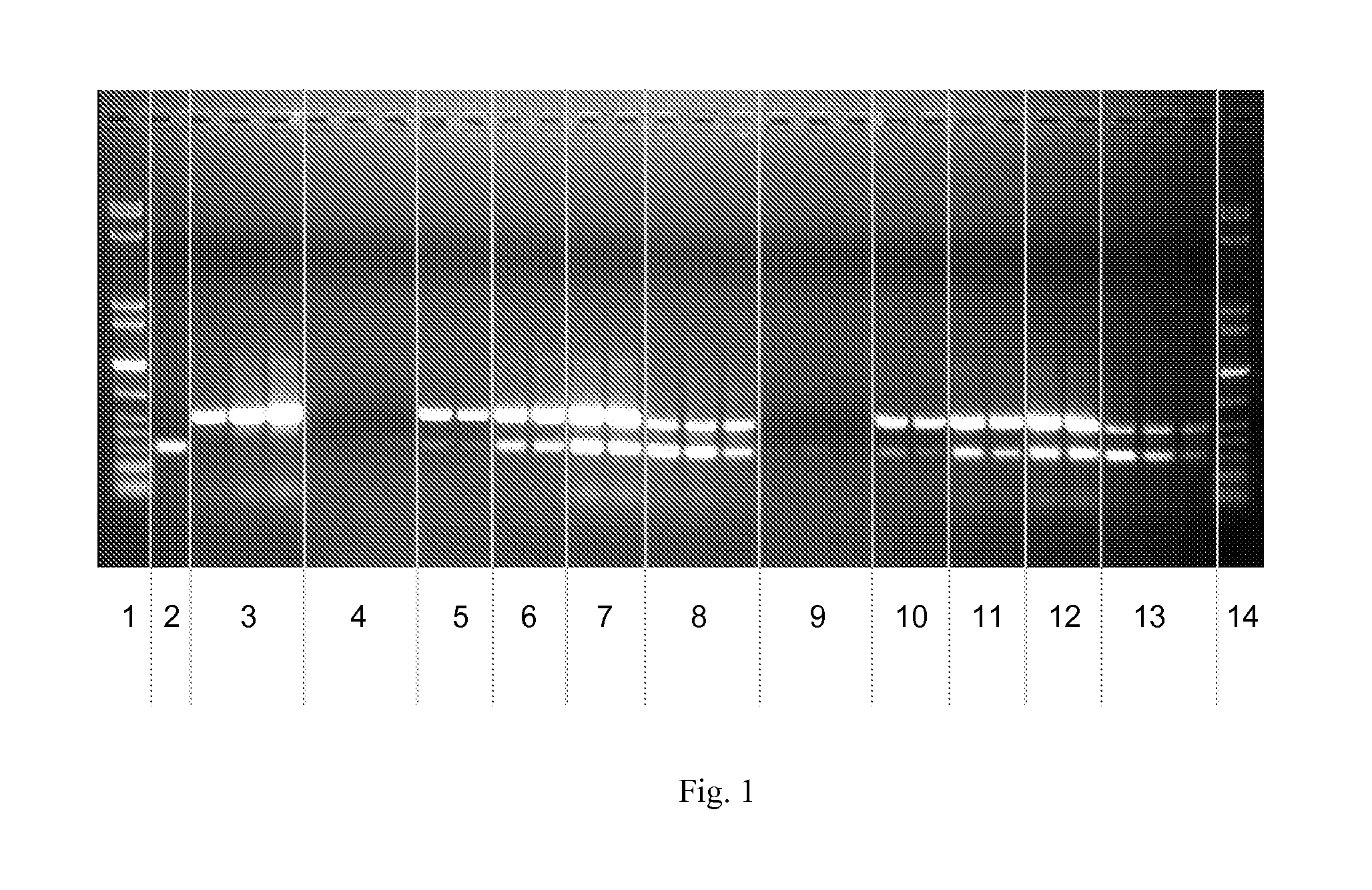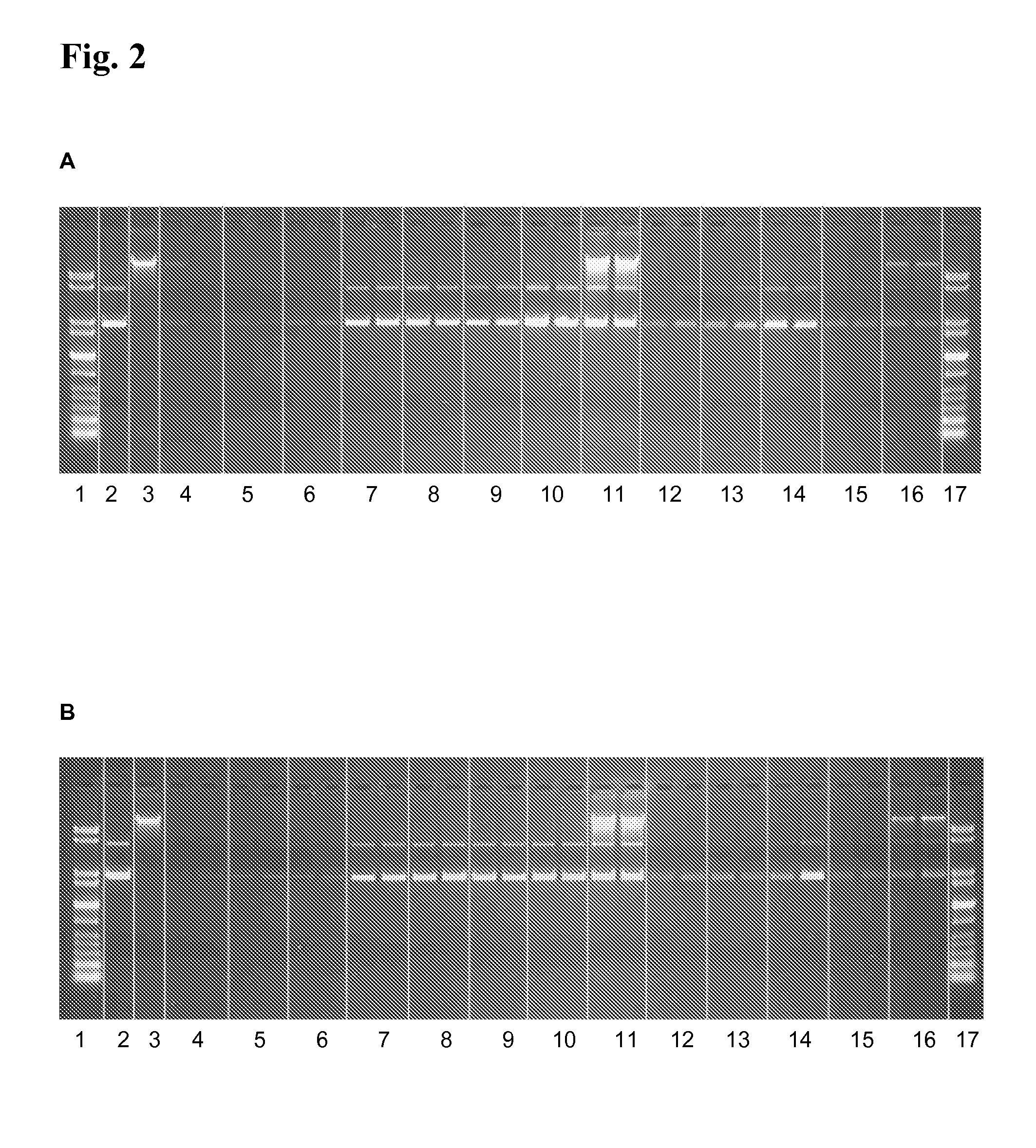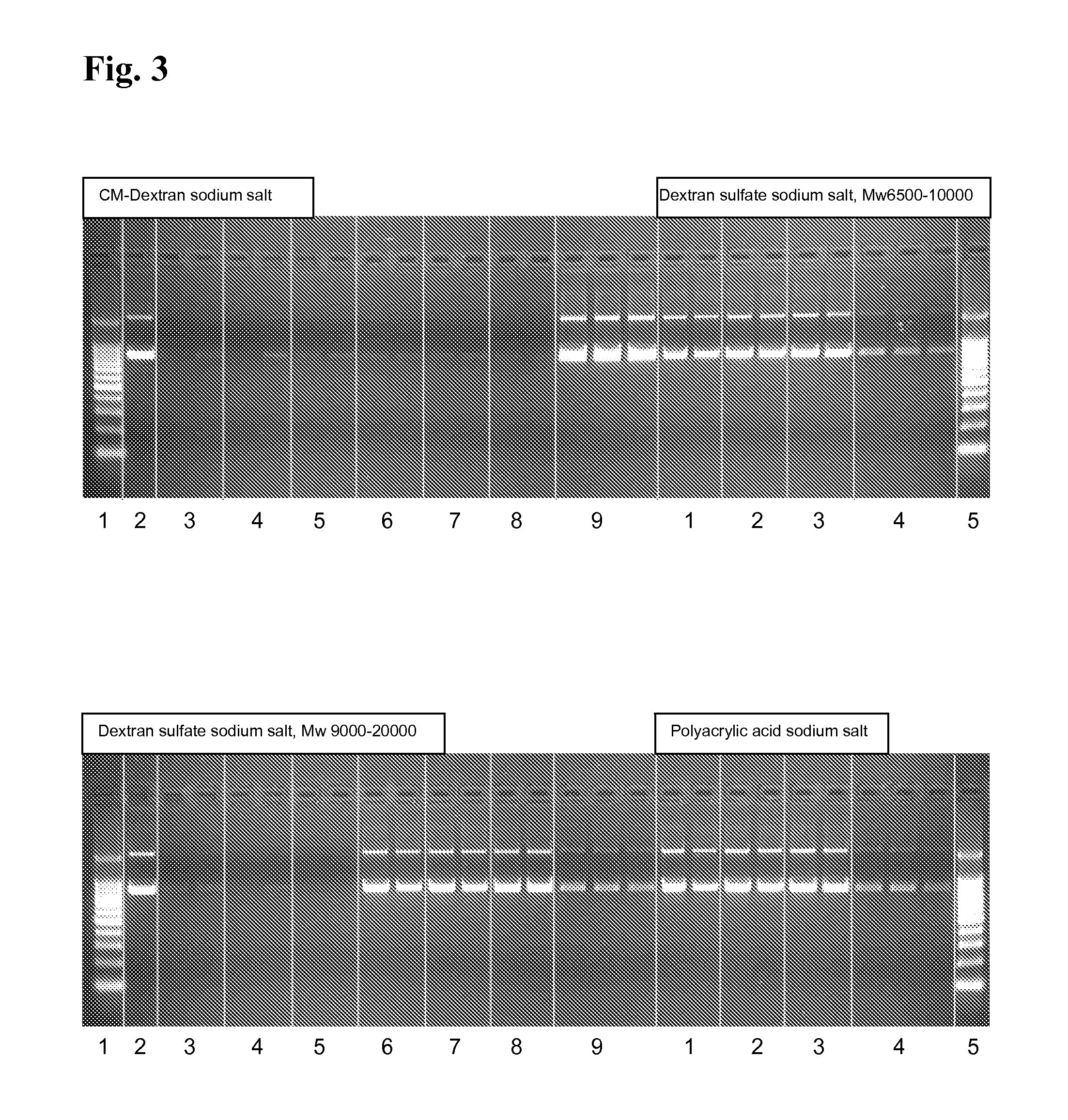Compositions, methods, and kits for isolating and analyzing nucleic acids using an anion exchange material
a technology nucleic acid, which is applied in the field of anion exchange material isolating, eluting, and analyzing nucleic acids, can solve the problems of difficult downstream processing and analysis of target nucleic acids, the inability of alkali buffers to be used for rna isolation, and the problem of alkali buffer storag
- Summary
- Abstract
- Description
- Claims
- Application Information
AI Technical Summary
Benefits of technology
Problems solved by technology
Method used
Image
Examples
examples
I. Materials
[0178]1. Anionic Exchange Modification of Magnetic Silica Gel
[0179]In a 100 ml one-necked flask with two-necked cap are provided 23 ml deionised water, 3 ml 250 mM NaPO4, pH 6.0, 100 μl 3-glycidoxypropyl-trimethoxysilane and 91.7 μl diethylaminopropyl-triethoxysilane. The solution is adjusted to pH 5.50 with 2 M NaOH. Before add-on, 2 g MagAttract Beads “G” are put in a nalgene-flask with 15 ml deionised water, shaken for 5 minutes on a shaker at level 5, magnetically separated (3 minutes) and the supernatant water is drained. The suspension is refilled up to total 7 g and added into the reaction flask. The nalgene-flask is washed once with 1 ml deionised water. Then, the flask is added to a KPG-stirrer and a reflux condenser. Stirring rate is 500 / min. The temperature of the suspension is raised up to 90° C. using an oil bath (heater without magnet). 90° C. is hold for 4 h. Afterwards, the oil bath is removed and the suspension is stirred 1 h to cool down. The flask volu...
working examples
II. Working Examples
Example 1
Nucleic Acid Elution Using a Secondary Nucleic Acid and Magnetic Anion Exchange Silica Particles
[0186]1 μg of a DNA fragment of 300 bp are dissolved in 100 μl buffer (25 mM MES, pH 7.0). Then, 1 mg of a magnetic silica gel prepared according to Example 1.1 are added and incubated at RT and 1,000 rpm. After magnetic separation, the supernatant is discarded. Then the beads are washed twice by incubation in 100 μl deionised water at 1,000 rpm on the thermal shaker for 5 min, magnetic separation and discarding of the supernatant. 50 μl elution buffer containing 1-3 μg of a 500 bp DNA fragment are added to the beads, and after 5 min incubation on the thermal shaker and magnetic separation the supernatant is obtained. Then the elution is repeated using 50 μl elution buffer containing 50 mM Tris, 50 mM NaCl, pH 8.5.
[0187]FIG. 1 shows that there is no DNA in the remaining sample and that the entire DNA was bound by the magnetic particles. In the eluates with 1, ...
example 2
Nucleic Acid Elution with Different Anionic Compounds and Slightly Alkaline Buffers
[0188]2 μg plasmid DNA (pUC21) are solved in 25 mM MES, pH 8.0 or 8.5 and 0.25 mg magnetic particles coated with polyethylenimine (50 mg / ml in deionised water) are added. The dispersion is mixed for 5 min at RT and 1,000 rpm. After magnetic separation, the supernatant is removed. Then, the beads are washed twice by incubation in 100 μl deionised water at RT and 1,000 rpm on the thermal shaker for 5 min, magnetic separation and discarding of the supernatant. Elution is performed using 100 μl elution buffer (25 mM MES, pH 8.0 or 8.5) additionally containing 2,000 ng dextransulfate (Mw 9,000-25,000), polyacrylic acid, oxalic acid or mellitic acid. Then, a second elution is performed using 50 μl 50 mM MES, 50 mM NaCl, pH 8.5.
[0189]FIG. 2 shows that using 2,000 ng dextransulfate, polyacrylic acid, oxalic acid or mellitic acid most of the pDNA is eluted from the magnetic particles. The second elution at pH ...
PUM
| Property | Measurement | Unit |
|---|---|---|
| Molar density | aaaaa | aaaaa |
| Molar density | aaaaa | aaaaa |
| Volume | aaaaa | aaaaa |
Abstract
Description
Claims
Application Information
 Login to View More
Login to View More - R&D
- Intellectual Property
- Life Sciences
- Materials
- Tech Scout
- Unparalleled Data Quality
- Higher Quality Content
- 60% Fewer Hallucinations
Browse by: Latest US Patents, China's latest patents, Technical Efficacy Thesaurus, Application Domain, Technology Topic, Popular Technical Reports.
© 2025 PatSnap. All rights reserved.Legal|Privacy policy|Modern Slavery Act Transparency Statement|Sitemap|About US| Contact US: help@patsnap.com



